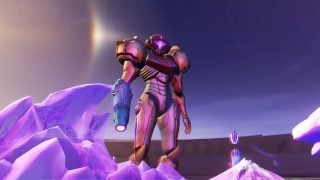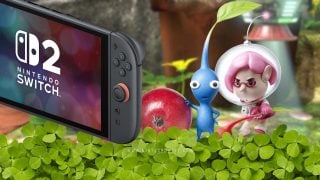When one thinks of the best 2D Zelda game, the competition is generally considered to be quite limited. A Link to the Past reigns supreme as the favorite of the franchise for many, and while there are significant factions that dig the poignant surreal nature of Link’s Awakening or the expanded play of A Link Between Worlds, it tends to not nearly be as contested as debate surrounding the 3D entries. In terms of my personal favorite 2D Zelda, however, my feelings are so conflicted that I can’t choose just one – I have to pick two.

Oracle of Ages and Oracle of Seasons hit the Game Boy Color in 2001, as one the platform’s last games before the GBA’s release. They were significant for several reasons – not only were these the first (and only) Zelda games to follow the strange, Pokémon-style dual release, but also the first time Nintendo would hand off Zelda to another company – Capcom (okay, only if you don’t count the CD-i games, but those are perennial exceptions to everything). Both moves would end up being surprisingly good decisions, as Capcom would prove to make not just one but two great entries in the Zelda series for the system – games that, much like chocolate and peanut butter, were stupendous on their own but worked even better in tandem.
Strength from simplicity
The main story found in Oracle of Ages and Oracle of Seasons is fairly similar in both games, with some tweaking. In the former, Link gets whisked away to the storied land of Labrynna, where he meets a young singer named Nayru. She soon gets possessed by the witch Veran, who uses her powers to begin mucking up time. Meanwhile, in Oracle of Seasons, Link meets the lovely dancer Din in the lush land of Holodrum. Unfortunately, evil intervenes again as she’s kidnapped by the foul General Onox, who imprisons her in a crystal and causes the seasons to go out of control. As Link ventures off to save both girls, however, a plot to resurrect the King of Evil lurks in the shadows…
The Oracle titles hardly have the most inspired plots, but they make up for it with some memorably quirky characters and diverse locales. Both Labrynna and Holodrum have a large Maku Tree who guides him on his quest – one flirtatious, the other sleepy. Nayru’s somewhat aggravating childhood friend Ralph quests to save her, though usually falls short of Link’s own efforts. Queen Ambi in the past holds mysterious plans for an ominous tower. Toss in skeleton pirates, lizard-people who jack your stuff and a strange underground race of knock-off Jawas, and you’ve got two great regions to explore.

As with many Zelda titles, both Ages and Seasons had alternate/parallel world aspects to them. Ages went with time travel, as the previous two console Zelda entries had done, but it focused more on cause and effect in the past and future, leading to a couple of chaos theory moments that Ocarina and Majora never really explored (though the later was about a time loop, rather than long leaps into the past). Seasons’ world was a big larger to make up for the fact that it didn’t have two eras’ worth of content, and even then there was a small underground realm called Subrosia to explore.
Presentation-wise the games are virtually identical, with a style that was essentially carried over from Link’s Awakening and enhanced slightly. Even so, the two titles strike a slightly different mood – Ages has a more historied, classical feel with its sepia-toned past and large medieval structures, while Seasons appears more vivid with its various color palettes and a naturalistic vibe that clashes with its drearier underground. While not the most atmospherically proficient games in the series, both Oracle games have their charms.
Awesome arsenal
While the game’s gameplay isn’t a huge departure from Link’s Awakening, it didn’t need to be – Capcom instead focused on giving Link a bevy of new toys to play with, creating one of the best arsenals the series had to offer.
First were seeds – found in trees dotted across the landscape, they had a variety of effects, from simply burning things to making Link run fast. Best of all, they tended to have different uses depending on whether you used them straight from the satchel or fired them from a weapon. Fire the teleporting Gale Seeds to whisk enemies away, or drop a Scent Seed to lure foes to a specific location. It was a simple system that created potential for much more intricate interactions with both puzzles and monsters.

Certain Zelda staples – such as the bow and the hookshot – are nowhere to be found, instead replaced by more unique variations. The Seed Shooter (Ages) permitted Link to fire in 8 directions, while the Slingshot (Seasons) could fire three at once. The Switch Hook (Ages) swapped Link with objects around him, while the Magnetic Gloves (Seasons) utilized polarization to great effect with various objects. That’s not even considering cool stuff like the Mermaid Suit (which offered free water exploration) or the Roc’s Cape (allowing Link to not only jump, but outright glide places). It’s my favorite loadout in the entire Zelda series, and Capcom did well in breaking away from convention.
The central mechanics in each game were also unique. In Ages, Link could use Nayru’s Harp of Ages to travel between eras – first only at predetermined points, but then wherever he wished. This greater flexibility of time travel compared to Ocarina of Time allowed for more ingenious puzzles and interactions between ages. Seasons, meanwhile, had the Rod of Seasons which – as one would expect – changes the seasons, drastically altering the landscape. Autumn fills in gaps with leaves, winter piles up snow and freezes lakes, spring causes flowers to bloom and water to rise, and summer will make vines grow and lakes dry up. There were even more effects to be found, once again turning areas of the landscape into elaborate puzzles.
One of the Oracle game’s stranger, though still welcome, additions is animal buddies. Over the course of his adventure, Link meets three animals – the sleepy flying bear Moosh, the swimming Dodongo Dimitri, and the kangaroo with boxing gloves Ricky. After hanging out briefly with each one, Link will pick up a flute that makes one of them a permanent companion. Helpful in both exploration and taking out enemies, the animal buddies add some personal flair to each person’s adventure while also contributing to the game’s replay value. I’m a little sad that something similar hasn’t shown up since, though I suppose they are a bit Disney in comparison to Zelda’s usual tone.

Adding to all of this is the ring system. A multitude of rings lay scattered across both lands, and – when acquired and appraised – they have a great variety of effects. Some boost your attack and lower defense, or make you immune to bombs, or just look pretty on your status screen. While collecting every last one was a pain and needlessly difficult, they did add even more uniqueness and flavor to a game already oozing with it.
A Link between games
Usually with this sort of Pokémon style of release, it’s assumed that the two games are essentially the same with minor differences. Not so with the Oracle games – each game is a full, different adventure with unique dungeons, characters, enemies and more, and the way in which the games interact adds a huge amount of replay value.
Even on their own, Ages and Seasons focus on different aspects of the Zelda experience. Ages places its priorities in puzzle solving, creating crafty machinations for Link to solve and giving him tools more suited to precision and carefulness (the Seed Shooter, Cane of Somaria, etc.). Seasons, meanwhile, is combat-oriented, throwing tougher battles against our intrepid hero and in turn giving him more mobile and offensive items (the Slingshot, Level-2 Boomerang, etc.). That alone made the adventures gratifying, but the true Oracle experience comes when you link between the two titles.

Beating one Oracle title and then inputting the given code in the other will start a different version of the journey. The plot now picks up where it left off, rather than starting in an all new locale with little context. Events are added to the story as it builds up towards a grand conclusion. Characters across the land will give you more codes that you can input back in the first game you beat, which will give you access to new items like Heart Containers, higher-level equipment, and – my favorite – the Biggoron’s Sword, which took up both of Link’s weapon slots and had a huge wind-up but was immensely strong and wide-reaching. You could then take these items back to Farore in the game you haven’t beaten and abuse them for profit and glory.
This system adds an excruciating amount of replay value. Going from Ages to Seasons is a different experience than going from Seasons to Ages, effectively giving you four playthroughs with unique feel and content. Throw in stuff like the Hero Cave that changes depending on which game you’re playing, the different animal buddies, and the meticulous ring system, and you have the best replay value out of any Zelda games out there. Some may view the restriction of the games’ true ending to linked save files as a form of monetary gatekeeping, but there’s nothing cheap about it. Each game is a full title on its own merits, and is enhanced further by the other’s presence. It makes me wonder what the picture would’ve been like if the third Oracle game (cancelled during development) saw the light of day – how crazy would the linking have gotten?
For the future
The Oracles games aren’t just insanely proficient at creating a familiar, yet fresh Zelda game – they’re peculiar in the best way, acting as a strange 1-in-2 combination that no other game can offer. I don’t know if I’d quite like to see the same idea in the Zelda series again, per say, but I would absolutely love to see other series who use the same pricing model (Pokémon, Yo-kai Watch) consider their lessons and designs in and of themselves.
In the end, the Oracle games aren’t as influential or as classic as many of the other Zelda entries. In my experience they tend to be among the most forgotten ones, relatively lesser known and lesser praised in comparison to their brethren. And that’s a shame. They weren’t the peak of innovation, but their sheer simple solidity, combined with creative items and utterly fantastic replay value, make them games worth remembering, no matter the time or season.
This article is part of our new Zelda look-back series running up to the release of Breath of the Wild.
Leave a Comment

